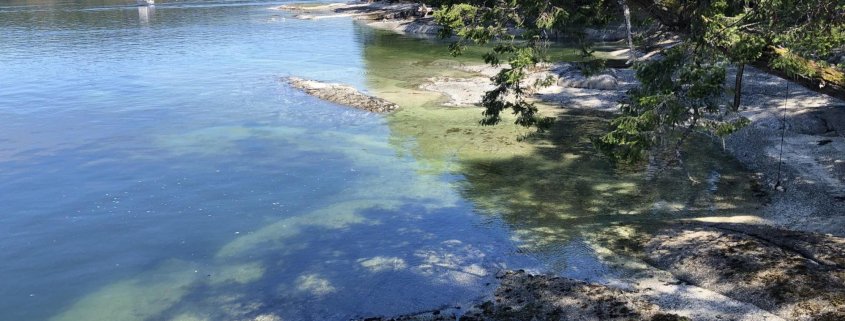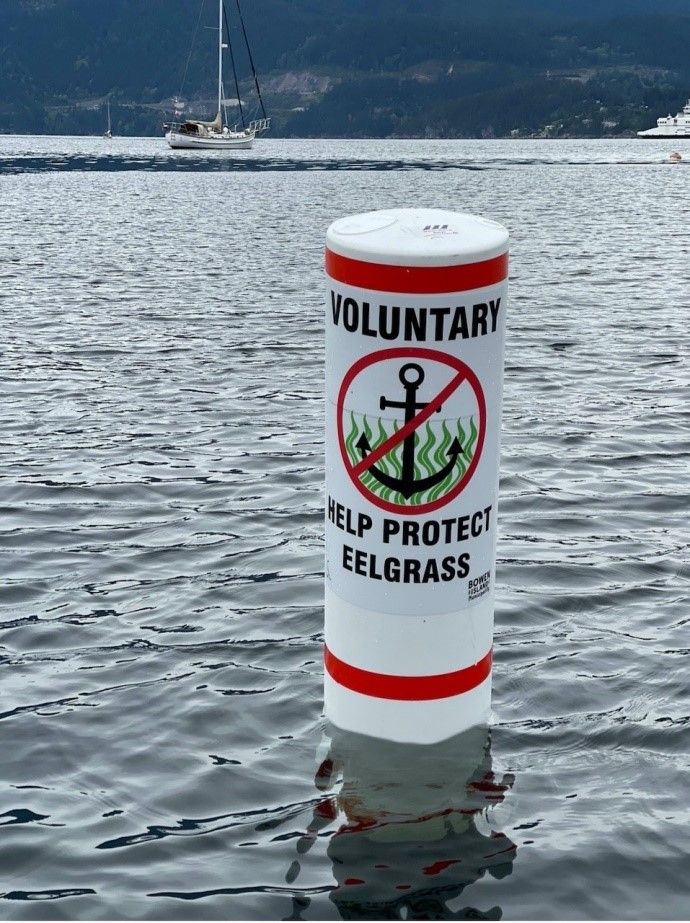
With all of the challenges Pacific salmon face, marine debris in their estuary rearing habitats should not have to be one of them. Unfortunately, many nearshore areas that provide critical habitats for young salmon, forage fish, and other prey items have been degraded by coastal development and recreational activities. Working with our partners, SeaChange Marine Conservation Society, Rugged Coast Research Society, and the Dead Boat Disposal Society, Pacific Salmon Foundation is helping reverse damage and clean up debris throughout the Strait of Georgia.
Marine debris removal and habitat restoration and monitoring
Through a PSF partnership with SeaChange Marine Conservation Society, items like ghost nets, abandoned boats, buckets, ropes, anchors and even toxic creosote pilings have been collected and disposed of properly. The project, which also focuses on eelgrass and riparian habitat restoration, was a five-year effort lasting until 2022. Over 37,000 kg of underwater marine debris have been removed from around the Strait of Georgia. Underwater debris was cleared from Scottie Bay, Maple Bay and False Bay on Lasqueti Island, as well as from Gibsons Harbour and Plumper Cove in Howe Sound. From Burrard Inlet, 44 creosote piles and beams were removed. In addition, eelgrass has been restored at seven sites, including Lasqueti, Pender and Saturna Islands in the Gulf Islands, Mannion Bay in Howe Sound, Cates Bay in Burrard Inlet and Porpoise Bay and Lamb’s Bay in Sechelt Inlet, over the last year. This involved transplanting 7,074 eelgrass shoots for a total restored area of 707 m2. The map shows the location of all the restoration and debris removal sites since the project began.

Steps are being taken to ensure these rehabilitated areas remain healthy and debris free. The eelgrass restoration sites are being monitored and assessed every six months. Thus far, many beds have shown signs of growth and expansion and others are good candidates to receive additional shoot plantings.

To protect the from future damage, a number of ‘Anchor-out-of eelgrass’ signs and marker buoys have been placed near eelgrass beds. Mid-line float moorings, which prevent scoring of the seabed, have also been installed in Ford Cove on Hornby Island four and in Mannion Bay on Bowen Island. Together, the signage and installations will raise awareness and help boaters avoid incidentally damaging significant and sensitive habitats.
In carrying out these projects, SeaChange Marine Conservation Society has involved community volunteers and formed and maintained key partnerships. This maximized what could be achieved, provided learning opportunities and increased awareness, which will be so important to future conservation projects.
Mapping Marine Debris
The Pacific Salmon Foundation has supported Rugged Coast Research Society (RCRS) to map the location of marine debris in sensitive habitats in the Strait of Georgia. Their focus was on damaging debris such as creosote pilings and logs, sunken vessels, abandoned docks, log booms, and wood waste in the intertidal zone. At each location, RCRS teamed up with stewardship groups that have local insights and knowledge of problematic areas and work side by side. In 2021, estuaries along the east coast of Vancouver Island were mapped including the Cowichan, Nanaimo, Englishman, Little Qualicum, Big Qualicum, Puntledge, Oyster and Campbell Rivers estuaries. Then the effort continued with salmon bearing estuaries and prime forage fish habitats along the north Strait and Sunshine Coast being mapped in 2022.
To support their mapping efforts, RCRS has been working with an open, free app called ‘Input’, to streamline data collection and entry. With the app, users can directly mark the location coordinates, notes, and photos of debris from their phone or tablet. As Rugged Coast maps these initial estuaries, the app will be tried and tested by the team and the stewardship groups they work with. The ultimate aim is to be able to crowd source marine debris information from local stewardship groups directly through the app and have the information be stored centrally. As the data are collected, RCRS will compile the resulting catalogue of marine debris into an interactive map with detailed notes, photos and drone footage.
Future debris removal
In the future, PSF plans to work with partners, such as RCRS and Dead Boat Disposal Society, that specialize in marine debris removal to collect these unsightly and hazardous items. Having a comprehensive inventory from the marine debris mapping project will allow for a coordinated approach, so that debris can be prioritized and collected in an efficient manner. Removal of large debris from the marine environment can be complicated and typically requires skilled divers, heavy equipment, machinery and barges. Dead Boat Disposal Society, a non-profit that is dedicated to marine debris removal, has worked closely with federal and local governments on such projects over the years. Having removed lots waste and derelict boats from the coast of BC, they are well placed – and keen – to get rid of some more. See a time lapse video of the Dead Boat Disposal Society removing three boats from Gabriola Island.
In 2019, a new bill, Bill C-64 – the Wrecked, Abandoned, or Hazardous Vessels Act came into play. This bill gives the Nairobi International Convention on the Removal of Wrecks, 2007 force of law in Canada and extends it to all Canadian waters. This means that owners of these vessels are obligated to report, locate, mark and remove wrecks and are liable for hazardous wrecks resulting from maritime casualties. Owners of large vessels (300 gross tons or larger) are required to maintain insurance or other financial security to cover the costs of wreck removal, should the wreck pose a hazard. Funding is available through the federal Abandoned Boats Program for assessment and removal of problem vessels until at least March 2022. Learn more about the rules and responsibilities around wrecked and abandoned vessels.
If you are aware of or responsible for a derelict boat, it can be reported to the Dead Boat Disposal Society by following the instructions on their web page.



